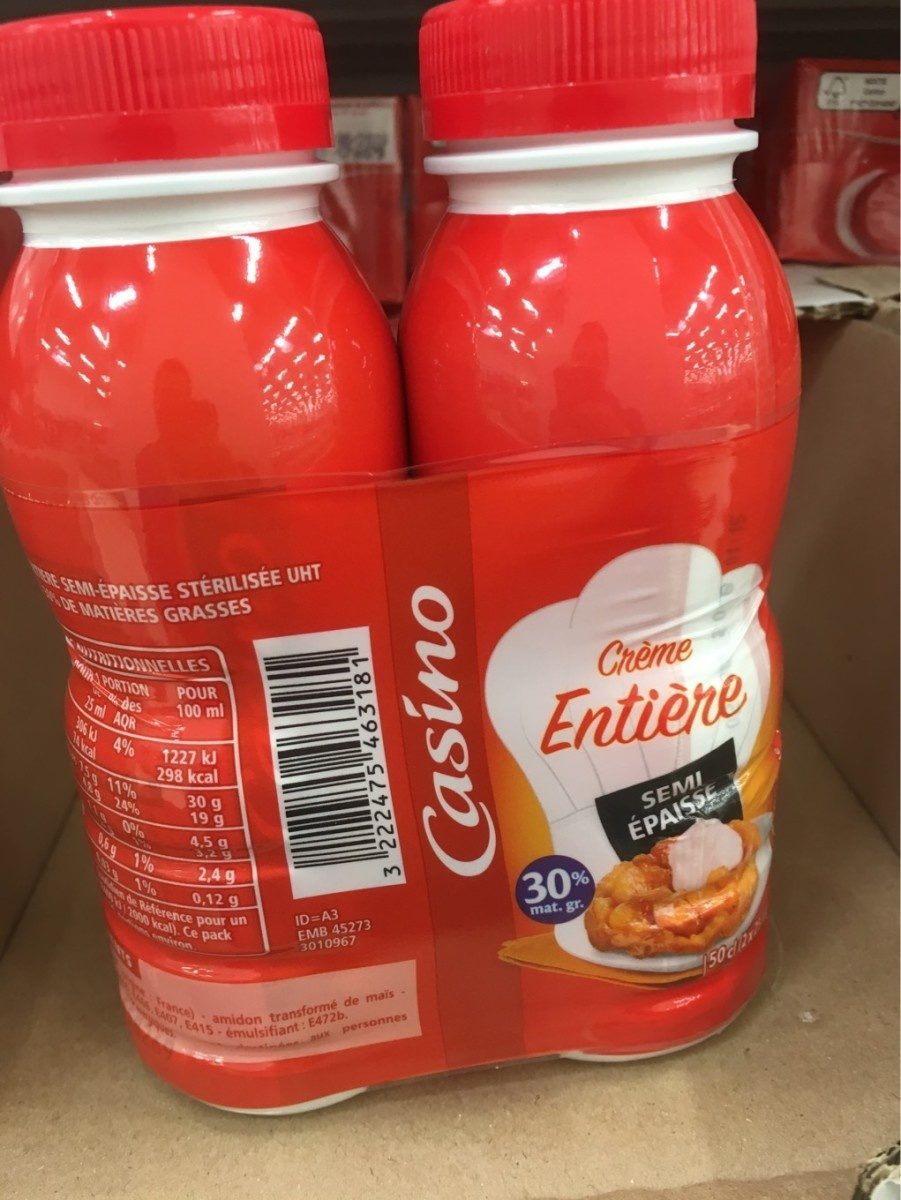Crème semi-épaisse entière - Casino - 50 cl (2 x 25 cl)
This product page is not complete. You can help to complete it by editing it and adding more data from the photos we have, or by taking more photos using the app for Android or iPhone/iPad. Thank you!
×
Some of the data for this product has been provided directly by the manufacturer casino.
Barcode: 3222475463181 (EAN / EAN-13)
Common name: Crème entière semi-épaisse stérilisée UHT à 30% de matières grasses
Quantity: 50 cl (2 x 25 cl)
Packaging: Metal, Recyclable Metals, Aluminium
Brands: Casino
Traceability code: EMB 45273 - Saint-Denis-de-l'Hôtel (Loiret, France)
Stores: Casino
Countries where sold: France
Matching with your preferences
Environment
Packaging
Transportation
Other information
Conservation conditions: A conserver de préférence à une température inférieure à +18°C et dans un endroit propre et sec. Après ouverture à conserver au réfrigérateur à + 6°C maximum et à consommer sous 3 jours. Ne pas congeler.
Recycling instructions - To recycle: opercule métal, bouteille plastique et son bouchon
Recycling instructions - To discard: Film plastique
Report a problem
Data sources
Product added on by date-limite-app
Last edit of product page on by packbot.
Product page also edited by autorotate-bot, casino, casino-off, kiliweb, openfoodfacts-contributors, roboto-app, teolemon, yuka.WjRJRktvWUFpdnNEd3ZFZDlFN3N3OEI0bVkrWGVGUHROUE5PSVE9PQ.






